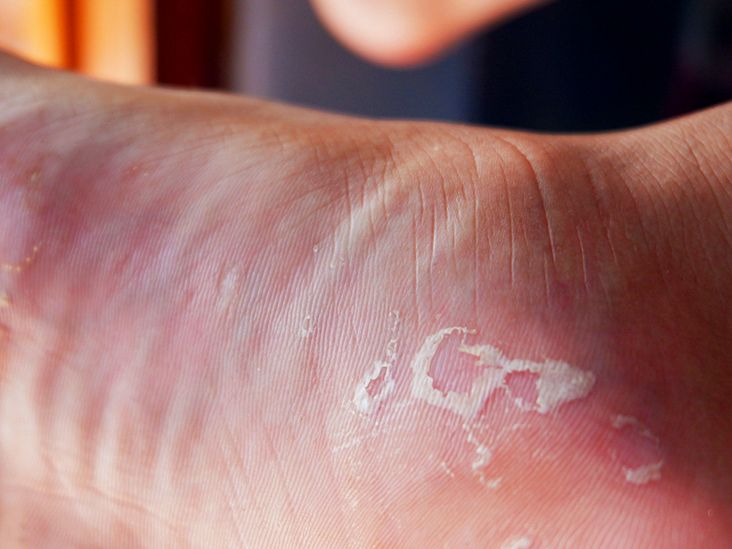Understanding Acral Peeling Skin Syndrome

Understanding Acral Peeling Skin Syndrome
Acral peeling skin syndrome is an exceptionally rare genetic disorder characterized by the painless peeling of the outer layer of skin, commonly on the hands and feet, though it may also affect the arms and legs. Historically, this condition was first documented in 1921 by Dr. Howard Fox, and as of 2019, fewer than 100 cases have been recorded in medical literature. While there is no definitive cure for acral peeling skin syndrome, most individuals experience mild symptoms that do not significantly impact their daily lives. Management typically includes the use of topical ointments and creams aimed at soothing the affected areas. Below, we delve into essential aspects of this rare condition.
Symptoms of Acral Peeling Skin Syndrome
The primary symptom of acral peeling skin syndrome is the painless shedding of the epidermis, the outermost layer of skin. Peeling is most frequently observed on the hands and feet, although it can also occur on the arms and legs, particularly in areas exposed to moisture and friction. Other notable symptoms include:
- Easily plucked hair
- Thin, fragile skin
- Itchy and inflamed skin beneath the peeling areas
Although blisters and scarring are rare, the condition typically manifests from birth and may appear later in childhood or early adulthood. According to a 2016 case study, a child exhibited symptoms as early as six months old. Symptoms tend to worsen in response to:
- Heat
- Humidity
- Moisture
Importantly, acral peeling skin syndrome is not associated with other health conditions and generally does not have a substantial impact on quality of life.
Causes of Acral Peeling Skin Syndrome
Acral peeling skin syndrome is linked to mutations in two primary genes:
- Transglutaminase 5 (TGM5): This gene is responsible for producing the TGM5 enzyme, crucial for forming cells that create the skin barrier. Insufficient enzyme production can lead to easy peeling of the skin.
- Cystatin A (CSTA): Mutations in this gene affect cell adhesion, further contributing to skin fragility.
Genetic Inheritance
This condition follows an autosomal recessive inheritance pattern. This means an individual must inherit a mutated gene from both parents to develop symptoms. If only one parent contributes a mutated gene, the child will be a carrier without displaying symptoms. The probabilities of inheritance are:
- 25% chance of the child developing symptoms
- 50% chance of being a carrier without symptoms
- 25% chance of neither carrying the mutation nor presenting symptoms
Contagion and Management of Acral Peeling Skin Syndrome
Is Acral Peeling Skin Syndrome Contagious?
No, acral peeling skin syndrome is not contagious. It is inherited through genetic mutations, meaning direct contact with an affected person presents no risk of transmission.
Treatment Options
Management focuses primarily on alleviating symptoms:
Home Remedies
Home treatments often involve emollients—moisturizers designed to soften and soothe dry skin. Common emollients include:
- Shea butter
- Cocoa butter
- Petroleum jelly
- Beeswax
- Mineral oil
- Coconut oil
- Jojoba oil
- Olive oil
To minimize symptoms, it is advisable to avoid:
- Prolonged immersion in water
- Excessive heat
- High humidity levels
- Friction on affected areas
Medical Intervention
Medical treatment is typically unnecessary. However, if blisters develop, healthcare professionals can safely drain them using sterile techniques and apply protective dressings to prevent infection.
Diagnosis of Acral Peeling Skin Syndrome
A diagnosis may be suspected by healthcare providers based on presentation of symptoms, though it can be challenging to differentiate from similar disorders, such as epidermolysis bullosa simplex. Diagnosis typically involves:
- Reviewing medical history
- Conducting physical examinations
- Performing skin biopsies for laboratory analysis to confirm gene mutations associated with the condition
When to Consult a Healthcare Provider
If you suspect that you or your child may have acral peeling skin syndrome, it is important to consult a healthcare provider. Diagnosis often occurs in early childhood or at birth, but undiagnosed cases can arise in adulthood, as noted in a 2014 case study involving a 44-year-old woman. Proper diagnosis is critical for effective management of the condition.
Conclusion
Acral peeling skin syndrome is an exceedingly rare genetic condition leading to painless peeling of skin, primarily affecting the hands and feet. To develop this syndrome, it is necessary for both parents to carry a related gene mutation. Although there is currently no cure, the condition rarely leads to serious complications or a diminished quality of life. Symptom management generally includes the use of moisturizing creams and ointments, allowing individuals to maintain comfort and skin health.
